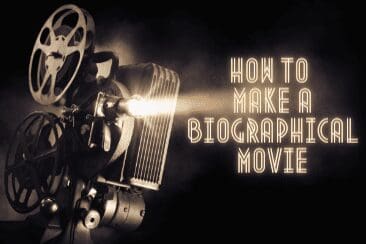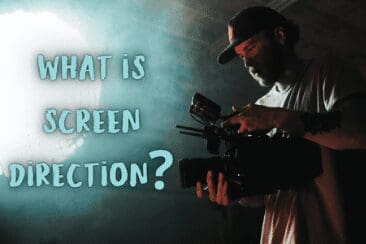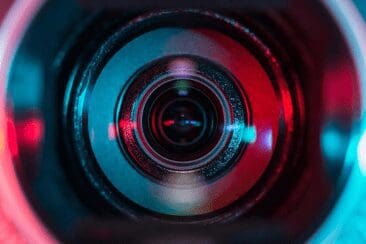Welcome to Cinematography terms and definitions 101; the first step in your cinematography education! Ever since the birth of motion picture techniques in the late 19th century, technicians and artists have used moving images to tell stories.
This is the art and craft of cinematography. In this article, we will give you the definition of cinematography, and look at what cinematography techniques filmmakers can use.
We’ll also look at the differences between videography and cinematography. Even though they share similarities, there are some fundamental differences. Towards the end, I’ll even give you some examples of the best cinematography movies.
What Is Cinematography?
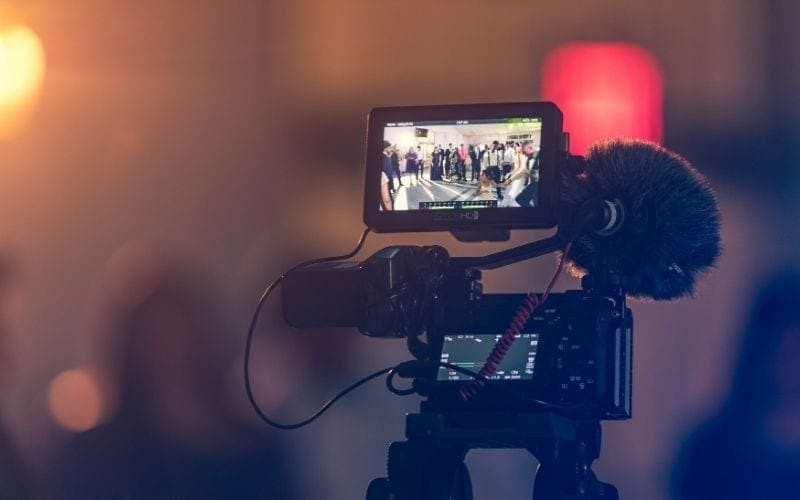
So, what is Cinematography?
If you asked every prominent cinematographer for their cinematography definition in film, you would receive a multitude of answers.
The answers to ‘What is cinematography?’ would range from the profound and pretentious right through to the dull and pragmatic.
One of my personal favourites is from the late Gordon Willis (The Godfather, Manhattan), who described cinematography as “visual psychiatry – making the audience think how you want them to think”.
One thing that I think all cinematographers would agree on is that at its core, cinematography is about telling stories. More specifically, it’s about using moving images to convey emotion, set the tone, deliver visual information, and heighten the cinematic experience.
The question then becomes, how do you do this? Well, the cinematographer has many tools at their disposal, but the main cinematography elements are:
- Shot composition
- Camera movement
- Lens choice
- Lighting
- Colour grading
Shot Composition

Shot composition refers to where in the frame different elements such as characters are placed. How you choose to compose a shot can tell the audience a huge amount about a character.
For example, how they’re feeling, and even their relationship to other characters. If the main character is feeling insignificant or marginalised, then composing a shot where the character appears tiny in the frame is a great way to visualise this.
Camera Movement
Camera movement, or lack thereof, can express a character’s emotion, build tension, or heighten energy within a scene. There are many ways to move the camera during a shot, each one evoking it’s own feeling or emotion.
Shooting with a handheld camera, for example, leads to a shakier and less controlled shot. This technique can provide added energy to a scene, and is often used when the director and cinematographer want the scene to have a frenetic quality.
Some of the best examples of this are the many action scenes in Saving Private Ryan. The fast-paced and violent action, combined with a handheld camera, provides a very immersive experience for the audience. Going the opposite way, cinematographers and film crews can use smooth dolly or Steadicam shots to create a calmer, more relaxed feeling.
Lens Choice
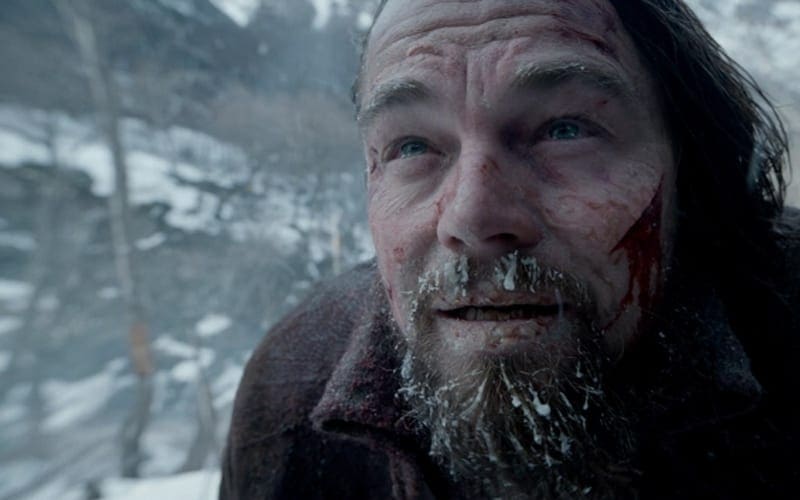
The lens you choose to capture each shot with is one of the most important cinematography elements to understand. Using a lens with a short focal length will render the scene in a completely different way than a lens with a long focal length.
Composing a close-up with a wider lens, for example, will help the audience feel they’re in close proximity to the character. Composing the same close-up on a long lens will have the opposite effect, making the audience feel like they’re watching the character from a distance.
This can be really powerful when you want the audience to watch the action unfold from a specific character’s point-of-view.
Another thing to consider with lenses is the overall quality and characteristics of the set that you’re using. Cooke lenses are known to have a warm and soft quality to them (referred to as the ‘Cooke look’).
Arri Master Primes are known to be pin sharp and almost clinical looking. These differences can be used to help set the tone of the film you’re shooting.
Cinematography Lighting
Vittorio Storaro (Apocalypse Now, The Conformist) once said “without any doubt, without light we can not have an image”. This is true from a scientific standpoint, but what he was really commenting on was the importance of lighting to the cinematographer. It’s their bread and butter.
Whether the lighting in a scene is hard or soft, warm or cool, bright (known as high-key) or dark (known as low-key), will have a huge effect on how the audience perceives a character, world or story. Picture the first horror film that pops into your head.
The lighting will likely be dark and cold. This is to create a sense of danger and unease – something that lurks in the darkness isn’t likely to be friendly. On the other hand, picture your average rom-com. It looks almost the opposite, doesn’t it? Bright and warm lighting feels relaxed and inviting, setting a completely different tone from our horror example.
These conventions, once understood, can be flipped on their head and used for different purposes. Let’s stick with the basics for now though.
Colour Grading
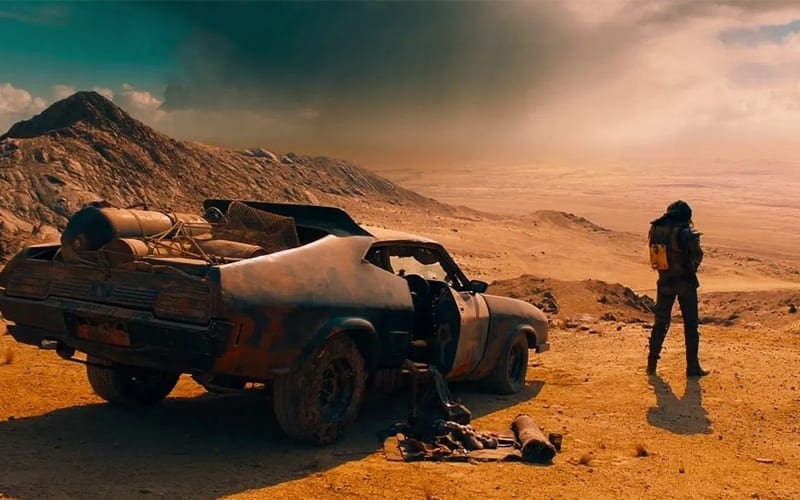
Colour grading is the process of taking the images you’ve shot, and altering them in post-production. Back in the days of celluloid film, this was done using a process called ‘colour timing’.
This is where you took the exposed film and ran it through a series of chemicals to change the images exposure, contrast, saturation, and colour balance. Nowadays, with the advent of digital cameras and specialist software, this is all done on a computer.
Usually the process of colour grading is relatively subtle. However, it can be used to push an image to the extreme. A recent example of this is Mad Max: Fury Road, where they made the day-time scenes warmer to emphasize the desert heat, and pushed the night scenes blue to create an added sense of danger.
For more information on techniques and to gather ideas, check out our guide to the best filmmaking books. If you want to be a real pro, you can read more about high definition and 24p cinematography in the latest book by the same title, by Paul Wheeler, which came out in 2003.
Videography Vs Cinematography
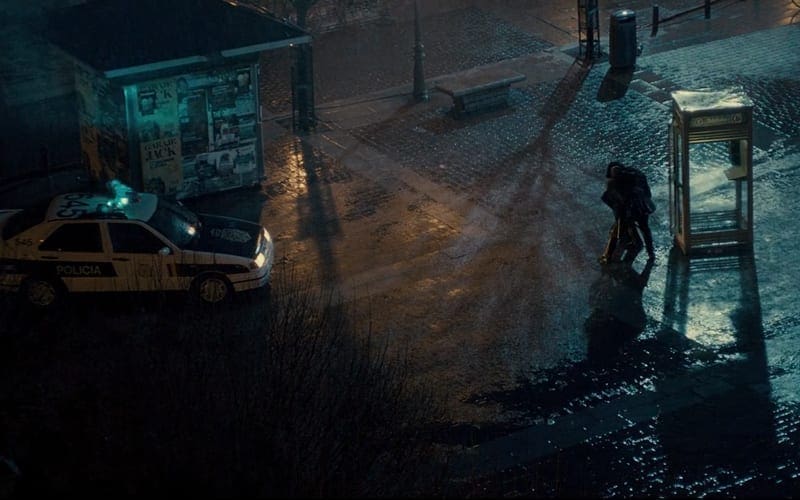
We know what cinematography is now, but what about videography? They’re both about using moving images to convey information, and use very similar tools to so, but what’s the difference? Well, the answer lies in the name.
Cinematography is about approaching the process of image-making in a cinematic way, the same way that the masters of cinema do; designing images with an in-depth consideration of camera placement, shot composition, lens choice, and lighting.
They do this with a real understanding of how these choices will affect the story that they’re telling. Design is the key word here.
Videography, on the other hand, tends to be a less careful and considered approach. This doesn’t mean it’s in any way inferior, it’s just a different approach to creating moving images.
The craft of videography tends to be done by one person (as opposed to a whole camera team), using the available light at a location, or lighting purely for exposure as opposed to creative reasons.
A videographer will usually pick a lens based on it’s flexibility without paying too much attention to shot composition. In general, videography is more about capturing what’s already in front of the camera, whereas cinematography is about carefully designing and crafting each shot.
Documentaries and narrative films with a very raw or natural look can blur the lines somewhat. With these types of films though, the use of natural light and looser shot compositions are a conscious and deliberate design choice, as opposed to being imposed out of necessity.
Many modern documentaries have begun approaching the process of image-making in a very cinematic way. Just look at the many true-crime documentaries on Netflix.
Cinematography Examples: Best Cinematography Films
As promised earlier, below are some examples of films with great cinematography, shot by some of the best cinematographers of all time. These are a great place to start when beginning your cinematography education.
The Godfather (1972) – Gordon Willis
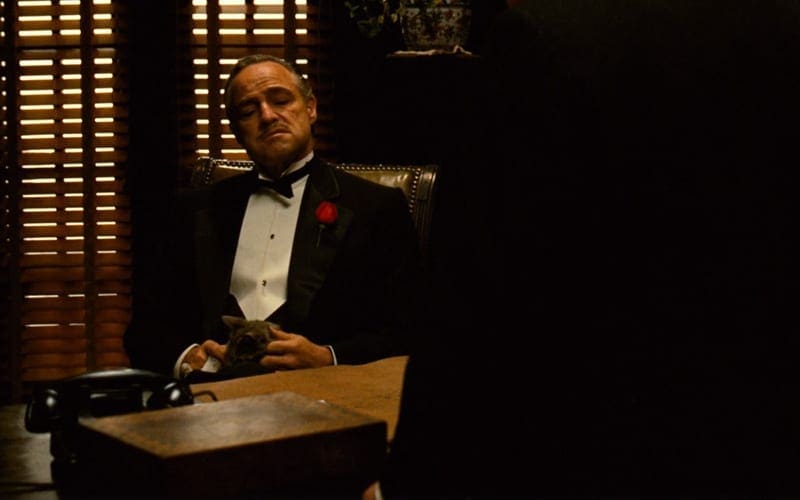
Known as the ‘Prince of Darkness’, Willis was a game-changer for the film industry and its approach to lighting. He described the process of cinematography as “painting in the dark”, and dark his films were.
Before he came along, many films were lit in a high-key style, but his murky lighting on The Godfather, although terrifying to studio execs worried about the audience not being able to see the actors, showed that approaching lighting in a realistic way was much better at portraying the often dark worlds that film characters inhabit.
Blade Runner (1982) – Jordan Cronenweth

How do you show the audience that a character they’re watching isn’t human, but in fact a high-functioning piece of artificial intelligence? Well, cinematographer Jordan Cronenweth came up with an ingenious solution.
Combining a light with a mirror in front of the lens, Cronenweth was able to catch the light’s reflection in the actor’s eyes. The resulting effect gave the characters a look of artificiality.
Blade Runner is also lauded for its combination of Sci-fi and film noir lighting, helping establish a ‘neo-noir’ style that you see replicated in many films today.
No Country For Old Men (2007) – Roger Deakins
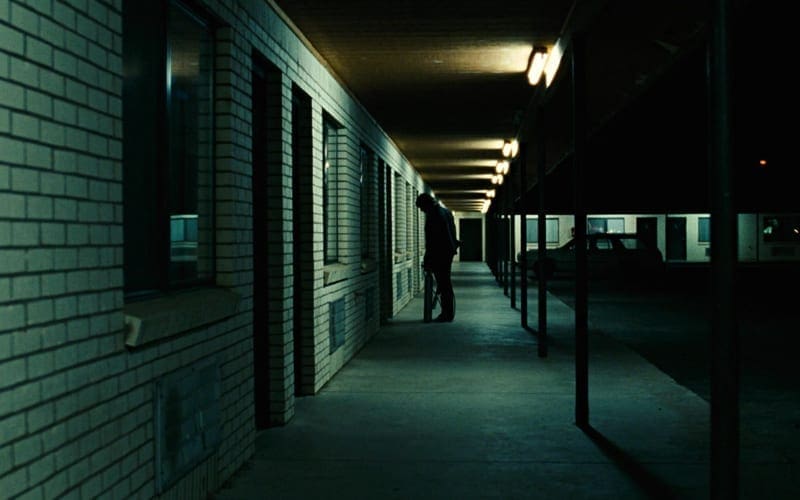
No cinematography list would be complete without a film from Roger Deakins, my personal favourite of his being No Country For Old Men.
The use of slow, meticulous dolly-moves, combined with the inky black and shadowy lighting, crafts tension in a way that leaves the audience on a knife-edge.
Hailed as one of the modern greats, any film that Deakins has shot will give you a great cinematographic education.
The Tree Of Life (2011) – Emmanuel Lubezki
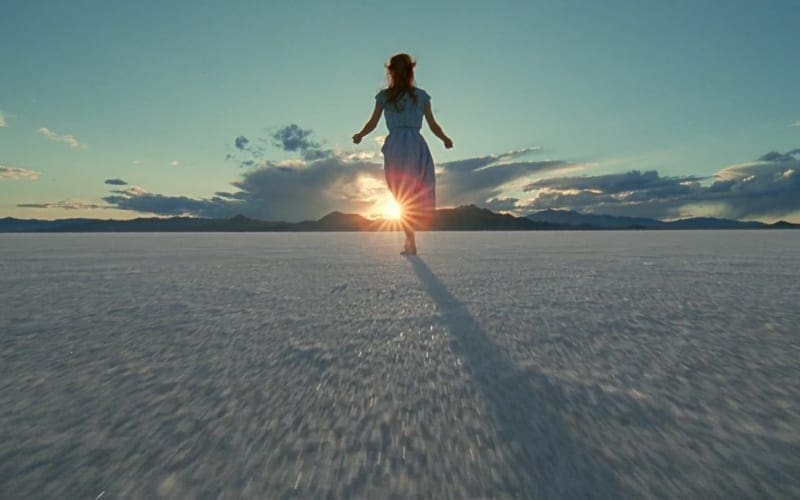
Lubezki, another modern master, has shot some of the best looking films of the past 20 years, and won three oscars along the way (at the time of writing). My personal favourite from the Mexican cinematographer is The Tree of Life.
His mastery of natural light, and smooth, sweeping tracking shots give this film an almost otherworldly and poetic feel.
Children Of Men (2006) – Emmanuel Lubezki

The next entry on our list is another from Lubezki (I’m a fanboy, get over it). Even without the ludicrously well-crafted long takes (long pieces of action captured in a single shot without cutting), this film would still be a cinematographic masterpiece.
It’s the long takes that make it such a great film to study, though. Closely following the action non-stop on a wide-angle lens creates a level of immediacy and immersion that’s truly unique, and has helped Lubezki become an all-time great.
Night Of The Hunter (1955) – Stanley Cortez
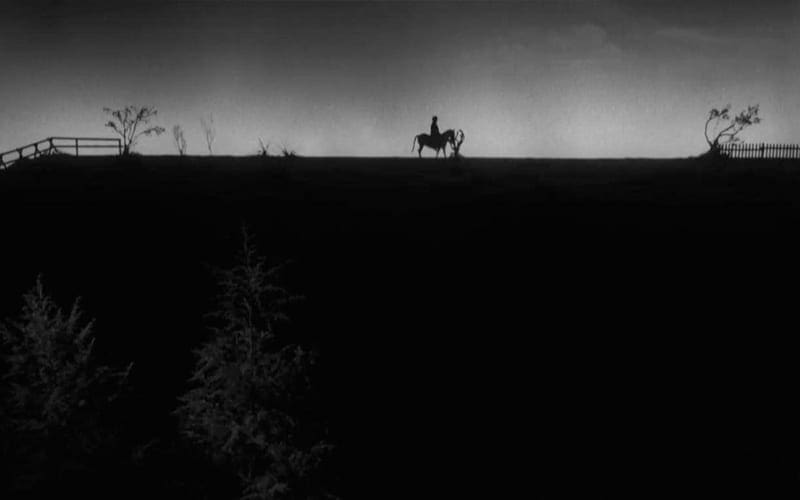
Night of the Hunter is an early example of how high-contrast lighting, and the use of silhouettes can create a dangerous feeling world, and even portray a character as evil.
Cortez’s work on this film was ahead of its time, and has inspired many directors and cinematographers since.
Saving Private Ryan (1998) – Janusz Kaminski

No movie-going experience has scared me as much as the opening scene of Saving Private Ryan did. It’s an absolute masterclass in filmmaking from every perspective.
Not only is the action harrowingly gruesome, but the frenetic, handheld camera-work and the bleach bypass process on the images, reflect the chaotic and visceral nature of warfare.
Kaminski also lowered the shutter angle of the camera, leading to the choppy and frenzied motion that the action scenes are notable for. This really puts the audience in the boots of a soldier.
Cinematography: A Summary
So there you have it, your first lesson in cinematography! Hopefully, we have covered the best cinematography definition and successfully advised what types of tools and techniques you can use to create cinematic images.
Watching and studying films with great cinematography made by great filmmakers, as well as shooting projects yourself, truly are the best ways to learn. Just remember to pay keen attention to how the greats use the visual elements we covered earlier to tell the story.
This way you can hone your craft just like them. I hope you now feel ready to take the next step in your cinematography education.
Class dismissed!
Want to learn more about cinematographers? Read our list of the most famous cinematographers of all time!






